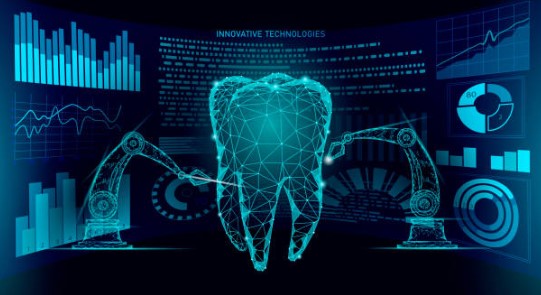Training in CBCT (updated english version)
in conformance with SEDENTEX CT – RADIATION PROTECTION N° 172
MEDISIS has developed a modular training program organized in 3 levels, in compliance with European guidelines and directives, and validated by the Radiology Department from the School of Medical Dentistry at the Lisbon University
Based on existing EU Directives and Guidelines on Radiation Protection, a set of 20 “Basic Principles” on the use of Dental CBCT have been devised by the SEDENTEX CT project by the European Academy of Dento-Maxillo-Facial Radiology (EADMFR).
They act as core standards for the use of CBCT within Europe for dentists, dental specialists and equipment manufacturers.
EADMFR Basic Principles on the use of Cone Beam CT
- CBCT examinations must not be carried out unless a history and clinical examination have been performed
- CBCT examinations must be justified for each patient to demonstrate that the benefits outweigh the risks
- CBCT examinations should potentially add new information to aid the patient’s management
- CBCT should not be repeated ‘routinely’ on a patient without a new risk/benefit assessment having been performed
- When accepting referrals from other dentists for CBCT examinations, the referring dentist must supply sufficient clinical information (results of a history and examination) to allow the CBCT Practitioner to perform the Justification process
- CBCT should only be used when the question for which imaging is required cannot be answered adequately by lower dose conventional (traditional) radiography
- CBCT images must undergo a thorough clinical evaluation (‘radiological report’) of the entire image dataset
- Where it is likely that evaluation of soft tissues will be required as part of the patient’s radiological assessment, the appropriate imaging should be conventional medical CT or MR, rather than CBCT
- CBCT equipment should offer a choice of volume sizes and examinations must use the smallest that is compatible with the clinical situation if this provides less radiation dose to the patient
- Where CBCT equipment offers a choice of resolution, the resolution compatible with adequate diagnosis and the lowest achievable dose should be used
- A quality assurance programme must be established and implemented for each CBCT facility, including equipment, techniques and quality control procedures
- Aids to accurate positioning (light beam markers) must always be used
- All new installations of CBCT equipment should undergo a critical examination and detailed acceptance tests before use to ensure that radiation protection for staff, members of the public and patient are optimal
- CBCT equipment should undergo regular routine tests to ensure that radiation protection, for both practice/facility users and patients, has not significantly deteriorated
- For staff protection from CBCT equipment, the guidelines detailed in Section 6 of the European Commission document ‘Radiation Protection 136. European Guidelines on Radiation Protection in Dental Radiology‘ should be followed
- All those involved with CBCT must have received adequate theoretical and practical training for the purpose of radiological practices and relevant competence in radiation protection
- Continuing education and training after qualification are required, particularly when new CBCT equipment or techniques are adopted
- Dentists responsible for CBCT facilities who have not previously received ‘adequate theoretical and practical training’ should undergo a period of additional theoretical and practical training that has been validated by an academic institution (University or equivalent). Where national specialist qualifications in DMFR exist, the design and delivery of CBCT training programmes should involve a DMF Radiologist
- For dento-alveolar CBCT images of the teeth, their supporting structures, the mandible and the maxilla up to the floor of the nose (eg 8cm x 8cm or smaller fields of view), clinical evaluation (‘radiological report’) should be made by a specially trained DMF Radiologist or, where this is impracticable, an adequately trained general dental practitioner
- For non-dento-alveolar small fields of view (e.g. temporal bone) and all craniofacial CBCT images (fields of view extending beyond the teeth, their supporting structures, the mandible, including the TMJ, and the maxilla up to the floor of the nose), clinical evaluation (‘radiological report’) should be made by a specially trained DMF Radiologist or by a Clinical Radiologist (Medical Radiologist)
Curricula for Training in CBCT
As stated in RADIATION PROTECTION N° 172, adequate theoretical and practical training for all those involved with CBCT should include the following curricula:
| Role | Training content |
| The Prescriber (a dentist referring a patient for CBCT and receiving images for clinical use) | Theoretical instruction Radiation physics in relation to CBCT equipment Radiation doses and risks with CBCT Radiation protection in relation to CBCT equipment, including justification (referral/ selection criteria) and relevant aspects of optimization of exposures CBCT equipment and apparatus Radiological interpretation Principles and practice of interpretation of dento-alveolar CBCT images of the teeth, their supporting structures, the mandible and the maxilla up to the floor of the nose (e.g. 8cm x 8cm or smaller fields of view) Normal radiological anatomy on CBCT images Radiological interpretation of disease affecting the teeth and jaws on CBCT images Artifacts on CBCT images |
| The Practitioner (a dentist responsible for performing CBCT examinations) | Theoretical instruction Radiation physics in relation to CBCT equipment Radiation doses and risks with CBCT Radiation protection in relation to CBCT equipment, including justification (referral/ selection criteria), optimization of exposures and staff protection CBCT equipment and apparatus CBCT image acquisition and processing Practical instruction Principles of CBCT imaging CBCT equipment CBCT imaging techniques Quality assurance for CBCT Care of patients undergoing CBCT Radiological interpretation Principles and practice of interpretation of dento-alveolar CBCT images of the teeth, their supporting structures, the mandible and the maxilla up to the floor of the nose (e.g. 8cm x 8cm or smaller fields of view) Normal radiological anatomy on CBCT images Radiological interpretation of disease affecting the teeth and jaws on CBCT images Artefacts on CBCT images |
MEDISIS DMFR Training Program
MEDISIS has developed a modular training program organized in 3 levels, in compliance with these guidelines, and EU directives and validated by the Radiology Department from the School of Medical Dentistry at the Lisbon University
| Level | Training content |
| Level I (2D radiology for prescribers and practitioners) Total: 12 hours (8 on-line and 4 hands-on) 2D Radiation Physics and Protection 2D Imaging techniques and interpretation | Theoretical instruction Radiation physics in relation to dental imaging equipment Radiation doses and risks with dental radiology Radiation protection in relation to intra-oral and extra-oral equipment, including justification (referral/ selection criteria) and relevant aspects of optimization of exposures Practical instruction Principles of intra-oral imaging and techniques Principles of extra-oral equipment and techniques Dental radiology equipment and apparatus Quality assurance for 2D Imaging Radiological interpretation Principles and practice of interpretation of dento-alveolar radiographic 2D images of the teeth, their supporting structures, the mandible, maxilla and surrounding structures Normal radiological anatomy on 2D radiographic images Radiological interpretation of disease affecting the teeth and jaws on 2D images Errors and artifacts on 2D images Clinical Cases |
| Level II (for CBCT prescribers) Total: 12 hours (8 on-line and 4 hands-on) 3D Radiation Physics and Protection 3D Imaging techniques and interpretation | Theoretical instruction Radiation physics in relation to CBCT equipment Radiation doses and risks with CBCT Radiation protection in relation to CBCT equipment, including justification (referral/ selection criteria) and relevant aspects of optimisation of exposures CBCT equipment and apparatus Radiological interpretation Principles and practice of interpretation of dento-alveolar CBCT images of the teeth, their supporting structures, the mandible and the maxilla up to the floor of the nose (e.g. 8cm x 8cm or smaller fields of view) Normal radiological anatomy on CBCT images Radiological interpretation of disease affecting the teeth and jaws on CBCT images Artifacts on CBCT images Clinical Cases |
| Level III (for CBCT practitioners) Total: 12 hours (8 on-line and 4 hands-on) Advanced CBCT Radiation Physics and Protection CBCT Imaging techniques and interpretation Quality assurance and reporting in CBCT | Theoretical instruction Radiation physics in relation to CBCT equipment Radiation doses and risks with CBCT Radiation protection in relation to CBCT equipment, including justification (referral/ selection criteria), optimization of exposures and staff protection CBCT equipment and apparatus CBCT image acquisition and processing Practical instruction Principles of CBCT imaging CBCT equipment CBCT imaging techniques Quality assurance for CBCT Care of patients undergoing CBCT DICOM preparation and reporting Radiological interpretation Principles and practice of interpretation of dento-alveolar CBCT images of the teeth, their supporting structures, the mandible and the maxilla up to the floor of the nose (e.g. 8cm x 8cm or smaller fields of view) Normal radiological anatomy on CBCT images Radiological interpretation of disease affecting the teeth and jaws on CBCT images Artefacts on CBCT images Clinical Cases |
Certificate of Training for CBCT practitioner
For a CBCT Practitioner Certificate of Training to be issued, one must enroll and be approved in all 3 levels of training with a total of 36 hours.
0 1







